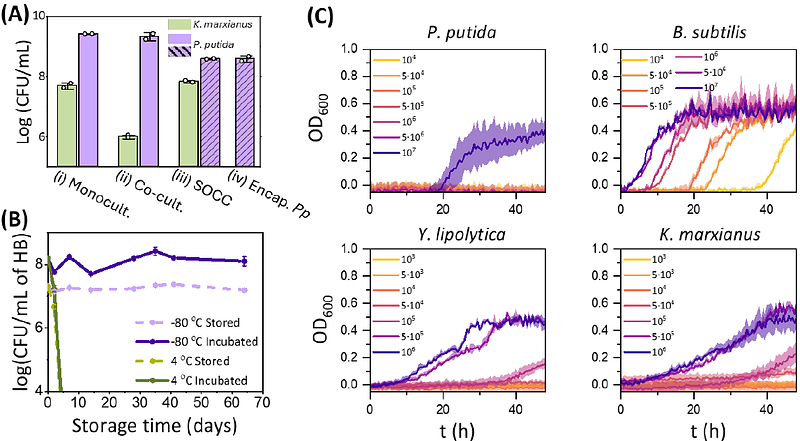Alginate-ϵPLL core-shell hydrogel beads as a tool for an effective, stable and scalable microbial encapsulation

Alginate-ϵPLL core-shell hydrogel beads as a tool for an effective, stable and scalable microbial encapsulation
Amaro-Cruz, A.; Garcia-Roman, M.; Moya-Ramirez, I.
AbstractSynthetic microbial consortia offer significant potential for biotechnological applications. However, achieving stable and reproducible co-cultures is challenging due to competitive dynamics and unbalanced growth rates among species. Here, we present an effective method for microbial encapsulation based on alginate-based core-shell hydrogel beads coated with {epsilon}-poly-L-lysine ({epsilon}PLL-HB). This method ensures complete microbial containment while allowing for consistent growth inside the beads of several microbial species with a wide variability in their features. Compared to chitosan and -poly-L-lysine, two of the most used coating agents for this kind of encapsulation, {epsilon}PLL demonstrated superior performance in avoiding cellular escape across diverse culture conditions and for all the microbial strains tested, while allowing their proliferation inside the capsule. {epsilon}PLL-HB enabled the construction of spatially organized co-cultures, effectively balancing populations between microorganisms with different growth rates. Furthermore, {epsilon}PLL-HB provided protection against toxic compounds in lignocellulosic-derived media and maintained their encapsulation efficacy and viability after long-term storage at -80 {degrees}C. The superior microbial containment, structural integrity and chemical resistance of {epsilon}PLL-HB, combined with their low price and ease of preparation, makes them a versatile tool for engineering synthetic microbial consortia, with broad applicability in biotechnological processes.